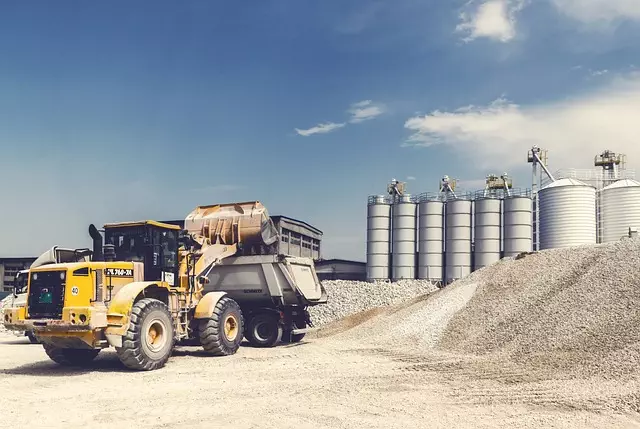Industrial Hygiene is a critical field focused on identifying, assessing, and managing workplace hazards. Through comprehensive exposure monitoring, professionals ensure employee safety by evaluating hazardous substances in air, water, and work areas. Hazard recognition and assessment involve visual inspections, worker interviews, and incident reviews, utilizing specialized tools to measure substance concentrations. This data guides risk management strategies, including improved ventilation and less toxic materials, fostering a healthier, more productive work environment. Effective exposure monitoring is key, addressing inhalation, ingestion, and skin contact risks, with control measures like engineering controls, PPE training, and continuous monitoring ensuring worker safety. Real-world examples show successful hazard recognition leading to improved air quality in manufacturing settings.
In today’s diverse work environments, understanding routes of exposure is paramount for maintaining safe workplaces. Industrial hygiene, a cornerstone of occupational health, involves hazard recognition and assessment to identify potential dangers. Effective exposure monitoring techniques measure and evaluate risks, ensuring regulatory compliance. This article delves into these key aspects, exploring common routes of exposure like inhalation, ingestion, and skin contact. Additionally, it highlights strategies for minimizing hazards through control measures and personal protective equipment, supported by compelling case studies from the real world.
- Understanding Industrial Hygiene: The Cornerstone of Safe Workplaces
- Hazard Recognition and Assessment: Identifying Potential Dangers
- Exposure Monitoring Techniques: Measuring and Evaluating Risks
- Common Routes of Exposure: Inhalation, Ingestion, and Skin Contact
- Strategies for Minimizing Hazards: Control Measures and Personal Protective Equipment
- Case Studies: Real-World Examples of Effective Exposure Management
Understanding Industrial Hygiene: The Cornerstone of Safe Workplaces
Industrial Hygiene is a critical field that focuses on recognizing and assessing various hazards present in the workplace. It serves as the cornerstone for creating safe and healthy work environments, ensuring employee well-being, and preventing occupational diseases and injuries. By implementing robust industrial hygiene practices, organizations can effectively manage and minimize employees’ exposure to potential risks.
This involves comprehensive exposure monitoring, where professionals measure and evaluate the levels of hazardous substances in the air, water, or other work areas. Such monitoring enables employers to take informed decisions regarding control measures. For instance, identifying high concentrations of harmful chemicals may lead to implementing better ventilation systems or switching to less toxic alternatives. Regular hazard recognition and assessment are essential steps in ensuring that workplaces meet safety standards and comply with regulatory requirements.
Hazard Recognition and Assessment: Identifying Potential Dangers
Hazard Recognition and Assessment is a critical step in understanding and managing risks associated with exposure in various settings, especially industrial hygiene. It involves meticulous identification and evaluation of potential dangers within a work environment. Through this process, professionals can pinpoint substances, conditions, or activities that may pose health risks to workers over time. By conducting thorough hazard assessments, organizations can implement appropriate control measures to minimize exposure and safeguard employee well-being.
Effective hazard recognition requires a comprehensive approach, including visual inspections, worker interviews, and review of incident reports. Industrial hygiene experts play a pivotal role in this stage by utilizing their knowledge and specialized tools for exposure monitoring. This involves measuring the concentration of hazardous substances in the air or other mediums to determine the extent of potential risks. The data collected from exposure monitoring provides valuable insights, enabling the development of strategies to control and prevent harm.
Exposure Monitoring Techniques: Measuring and Evaluating Risks
Exposure monitoring is a critical aspect of industrial hygiene, enabling professionals to quantify and assess risks associated with various workplace hazards. By employing sophisticated techniques, experts can accurately measure employee exposure to harmful substances, be it chemical, biological, or physical agents. These methods form the backbone of hazard recognition and assessment processes, providing essential data for implementing effective control measures.
There are numerous tools and strategies available in the arsenal of industrial hygiene specialists for exposure monitoring. These include direct reading instruments, such as handheld spectrometers and air quality monitors, which provide real-time data on airborne contaminants. Personal sampling via wearable devices offers a more individualised approach, capturing personal exposure levels. Additionally, biological monitoring can detect internalisation of hazardous substances through analysis of bodily fluids or tissues. Integrating these techniques allows for a comprehensive understanding of workplace risks, ensuring a safer and healthier environment for employees.
Common Routes of Exposure: Inhalation, Ingestion, and Skin Contact
Inhalation, ingestion, and skin contact are the three primary routes of exposure to hazardous substances in various environments, including industrial settings. Industrial hygiene plays a pivotal role in understanding and mitigating risks associated with these exposure pathways. When workers inhale toxic chemicals, they can suffer respiratory issues or even lung damage over time. Ensuring proper ventilation systems and implementing safety protocols for airborne contaminants is essential for hazard recognition and assessment.
Ingesting hazardous materials, whether through food, water, or accidentally, poses significant health risks. Skin contact, another common route of exposure, can lead to irritation, allergies, or more severe conditions depending on the nature of the substance. Effective exposure monitoring involves regular checks of air quality, careful handling and storage of substances, and comprehensive personal protective equipment (PPE) training for employees. These measures are crucial in preventing accidents and promoting a healthier work environment.
Strategies for Minimizing Hazards: Control Measures and Personal Protective Equipment
Identifying and implementing effective control measures is a cornerstone in minimizing hazards within any work environment, particularly focusing on industrial hygiene. Hazard recognition and assessment play a pivotal role in this process. By meticulously evaluating potential risks and their levels of exposure, businesses can enact tailored strategies to protect workers. This may involve engineering controls like improved ventilation systems or the use of containment barriers to physically block hazardous substances.
Personal Protective Equipment (PPE) is another critical component of hazard minimization. Depending on the specific risks involved, appropriate PPE such as respirators, safety goggles, gloves, and protective clothing can significantly reduce exposure during tasks that cannot be adequately controlled through engineering or administrative means. Regular training and education ensure employees understand when and how to use this equipment correctly, enhancing overall workplace safety. Moreover, continuous exposure monitoring helps maintain the effectiveness of control measures over time, ensuring a safe working environment for all.
Case Studies: Real-World Examples of Effective Exposure Management
In the realm of industrial hygiene, understanding and managing exposure routes is paramount to ensuring worker safety and health. Case studies from real-world scenarios offer valuable insights into effective exposure management strategies. For instance, a study on a manufacturing floor revealed that proper hazard recognition and assessment led to significant improvements in air quality. By identifying specific hazardous materials and their sources, the facility implemented targeted controls, such as local exhaust ventilation, to minimize worker exposure.
Additionally, exposure monitoring played a crucial role in this success story. Regular sampling and analysis of air quality data helped identify excessive levels of airborne contaminants. This information guided the implementation of additional engineering controls and personal protective equipment (PPE), further reducing exposure risks. These measures not only protected workers’ health but also enhanced overall productivity by creating a safer and healthier work environment.


